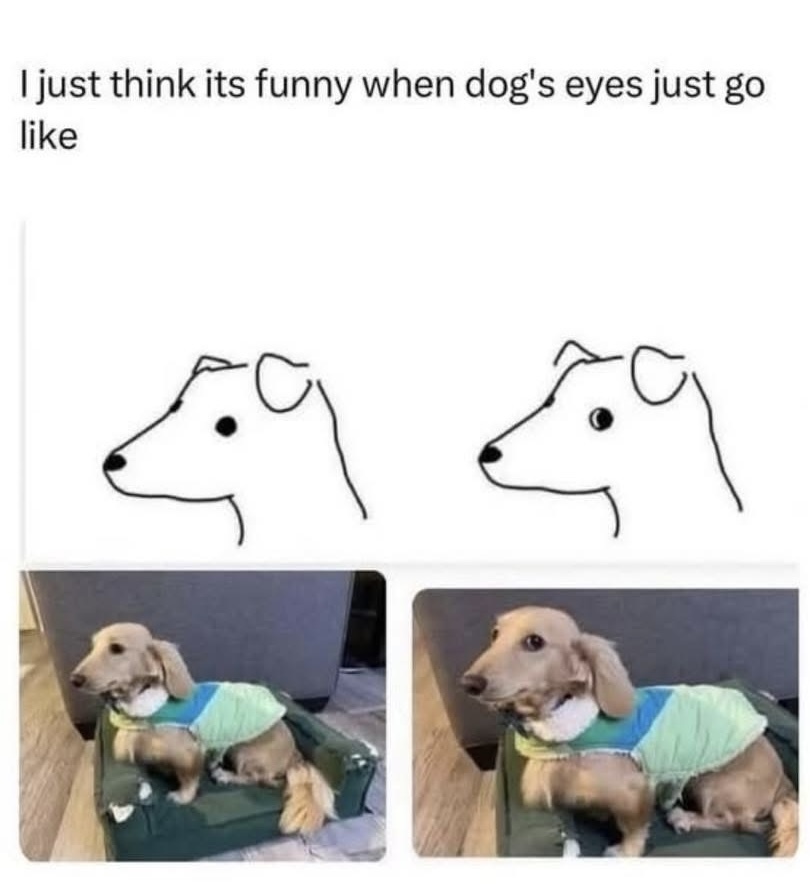this post was submitted on 08 May 2025
405 points (98.6% liked)
Dogs
4930 readers
177 users here now
A community about dogs.
Breeds, tips and tricks about training and behaviour, news affecting dog owners, canine photography, dog-related art and any questions related to dog ownership.
Rules
- Posts must be related to dogs or dog ownership and must not be void of content.
- This is a neutral space. No bigotry or personal attacks. Criticism should be polite and constructive.
- No automated content. This includes AI generated imagery, post body, articles, comments or automated accounts.
- No advertising or self-promotion.
- Illegal or unethical practices are frowned upon, and any comments or posts suggesting them will be removed. This includes, but is not limited to, backyard breeding, ear and tail cropping, fake service animals, negative reinforcement, alpha/pack/dominance theory, and eugenics.
- No judging or attacking community members who care for dogs with cropped ears, docked tails, or those from puppy mills or questionable sources. While we discourage these practices (per Rule 5), all dogs deserve loving homes and compassionate care regardless of their background or physical alterations.
- No breed discrimination, all breeds welcome. Our stance matches the ASPCA's official stance and is not up for debate.
- Citing your sources when making a claim is encouraged. Misinformation will be removed.
founded 2 years ago
MODERATORS
you are viewing a single comment's thread
view the rest of the comments
view the rest of the comments

Exactly.
A lot of armchair dog behaviourists will never get the chance to meet the dog they are talking about. And when teaching dog training, you have to tell owners to actually get to know their dog because they have their own individual expressions that are unique to them, or uniquely learned behaviours that you've accidentally reinforced
I think many dogs display whale or moon eyes, which in exactly the situation you described. Dogs like to check things out without moving their heads. Additionally, if we find that cute, the dog will likely develop a superstition to do that more because it's rewarding to get your attention.
This is really obvious in puppies, who mostly display innate behaviours compared to the same dog as an adult who has learned many expressions that get them what they want.
I think the biggest behaviour people misconstrue is licking. They do not notice the difference between hard licks and soft licks. Soft licks are friendly, or they taste delicious on your skin.
A hard lick means, "Can you please stop what you are doing?" It's a polite way of changing the subject. Many people misshandle their dogs and accidentally think the dog likes it because the dog licks them, so they do it more. It's such a trap for human dog interactions because their way of saying stop is confused for asking for more.